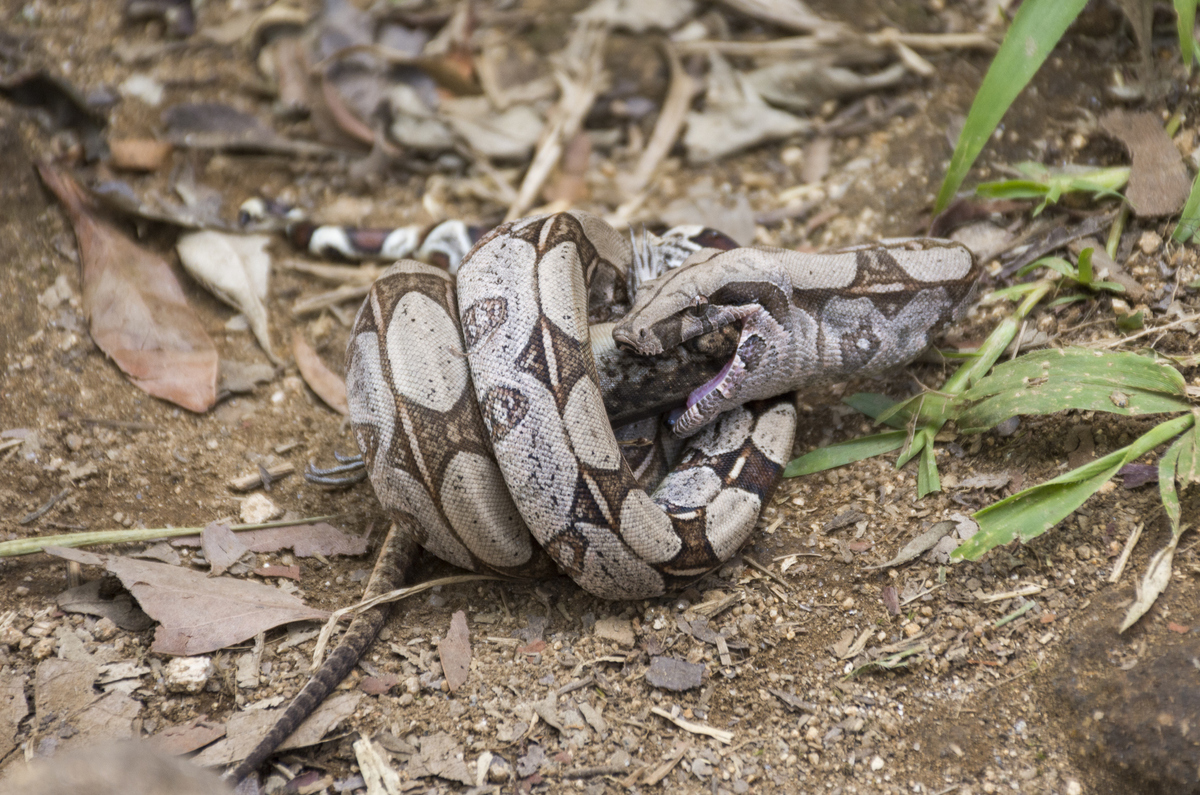Scientists have figured out how snakes keep breathing while constricting prey :

A boa constrictor feeds on a lizard in Tijuca Forest National Park, Rio de Janeiro, Brazil.
Vitor Marigo / Aurora Photos/Getty Images/Aurora Open
hide caption
toggle caption
Vitor Marigo / Aurora Photos/Getty Images/Aurora Open

A boa constrictor feeds on a lizard in Tijuca Forest National Park, Rio de Janeiro, Brazil.
Vitor Marigo / Aurora Photos/Getty Images/Aurora Open
Snakes that constrict and then swallow enormous prey have evolved a way to keep themselves from suffocating while they do it.
When the scaley coils closest to the snake’s head are super busy squeezing its dinner to death, the reptile can simply change how it breathes so that it uses ribs and muscles farther down the length of its body.
That’s according to a new study that used an inflated blood pressure cuff to immobilize different parts of boa constrictors’ bodies while simultaneously doing X-ray scans to monitor their ribs’ movement. What researchers observed is that the snakes could easily shift to using different sets of ribs to draw in air like a bellows.
“I just found it remarkable that they had such fine control,” says the study’s author John Capano, who studies biomechanics at Brown University. “We see just particular regions of ribs get activated and other regions are completely quiet and don’t move.”
A discovery with a tiny helmet and a blood pressure cuff
Boa constrictors have more than two hundred pairs of ribs running down the length of their bodies, and normally breathe by using muscles to rotate their rigid rib bones and pump air in and out.
Like the rest of their bodies, the lungs of a snake are long and stretch down much of the snake’s length. The part of the lungs closest to the head is where gas exchange seems to take place, as it is rich in blood vessels, while the part of the lungs closer to the snake’s tail is more like an empty bag.
When a snake bites and grabs prey, the front part of its body is usually completely engaged in subduing the meal by constricting it. And then, once a snake starts to ingest what is often a large animal relative to its own size, the rib cage has to spread wide open. “There’s a chance that they can’t move their ribs anymore, because they’re already at capacity,” says Capano.
A while back, when he was working in the lab of Scott Boback at Dickinson College, Capano and Boback noticed that when they fed snakes, “it looked like they were breathing with another section of the body” than what you’d see when they were “just kind of hanging out on the table at rest,” Capano recalls.
But it wasn’t clear whether this represented a true change in breathing on the snakes’ part. Perhaps, the snakes were always…
Read More: Scientists have figured out how snakes keep breathing while constricting prey :
